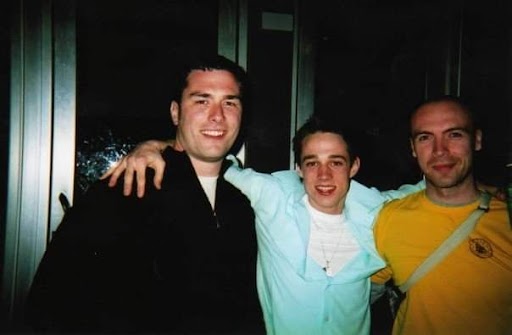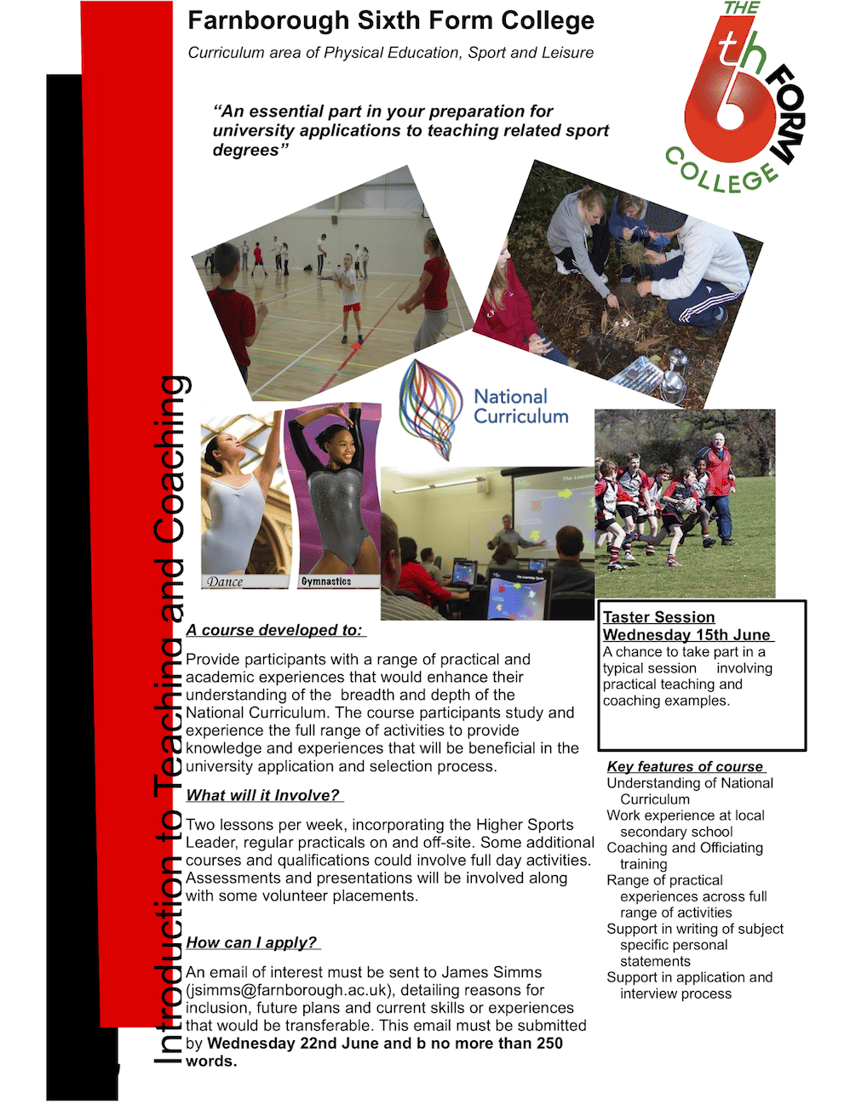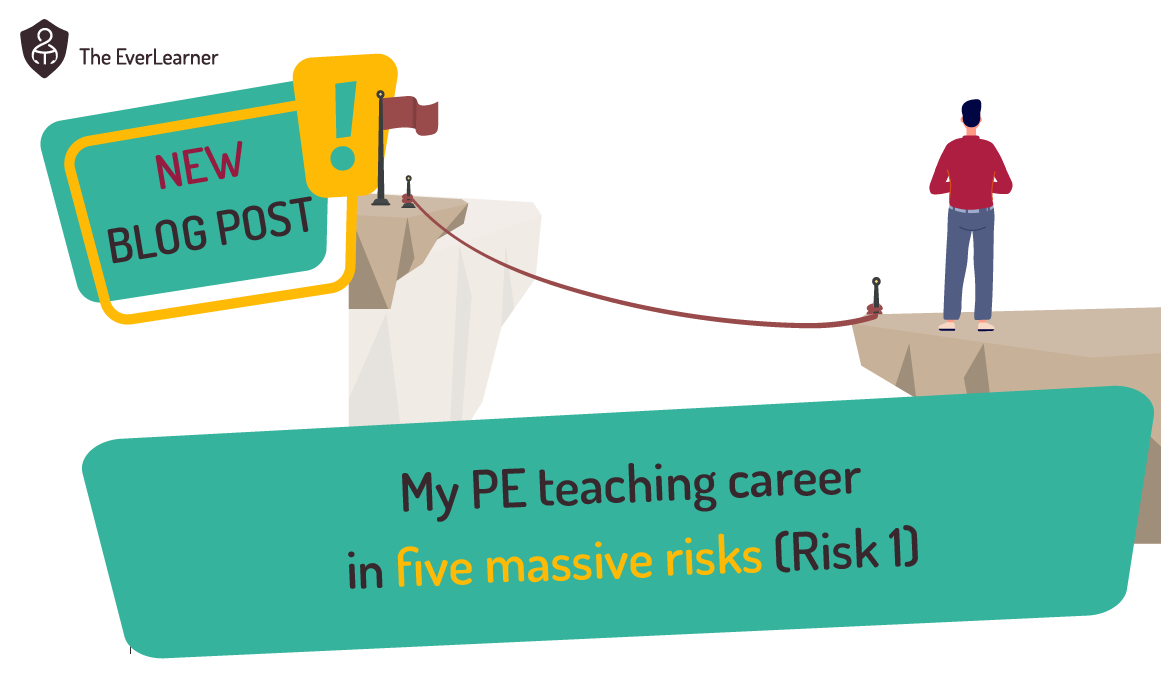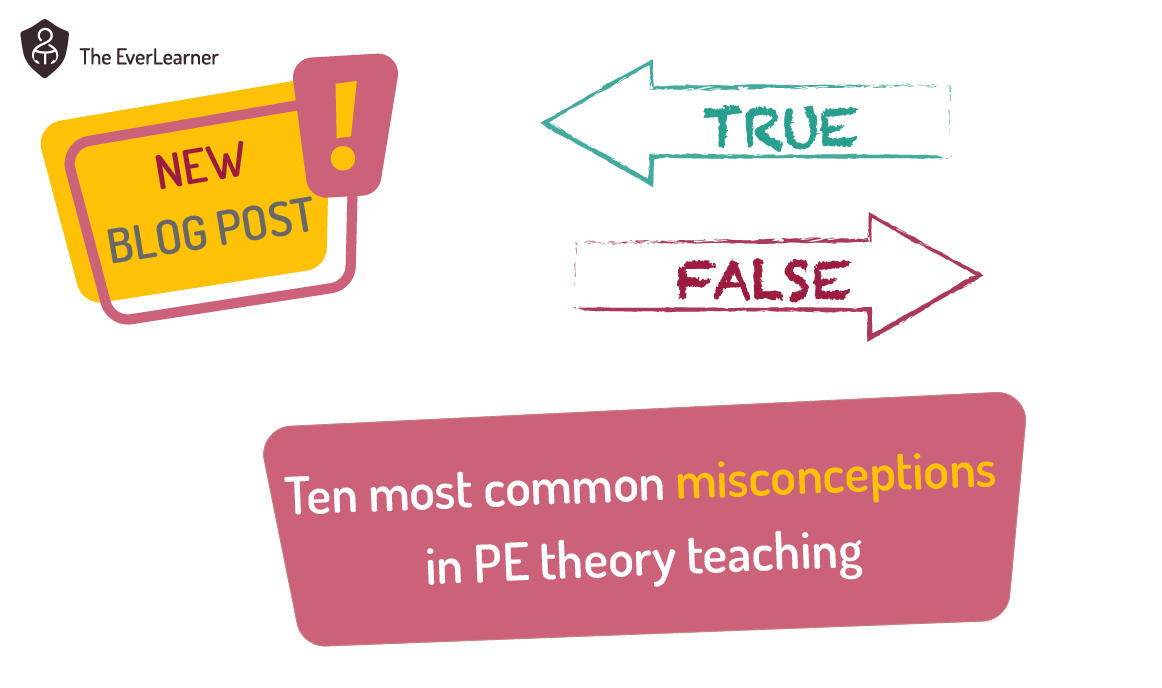My PE Teacher Career in Five Massive Risks. Risk Two: An Introduction to PE Teaching and Coaching Course via HSLA
The biggest influences in my PE teaching career are the risks that I have taken. Stepping out of line, in the most positive sense, to make challenges and to promote out-of-the-comfort-zone learning. I have worked in six PE departments over 20 years, working alongside in the region of 100 PE teachers in total across that time period, as well as working indirectly with thousands of PE teachers now. I do not believe that I stand out from that group in any way except for my willingness to take risks. My super power - for want of a much less cringeworthy term - is my willingness to take risks and to make those risks work.
Last week I wrote about Risk 1: the Dame Kelly Holmes Olympic Event and I would encourage you to read that post if you have not already. This week, I am writing about Risk 2: An Introduction to PE Teaching and Coaching course. I developed this course to serve a specific need. I was working at Farnborough Sixth Form College and, at that time (in 2011 - 2013), I was managing an A-level PE course of approximately 300 students per academic year (across year 12 and 13 combined). This was and remains the biggest A-level PE provision that has ever existed. Along with my colleagues, I had grown the course to be successful by every measure except one (read more about how I define success here: Defining success in PE and Sport Courses). That measure was the exit route for students post year 13.
The more I dug into the application and selection process and the more I engaged with admissions tutors, the more I heard and read the same things: students need something that marks them out if they want to achieve the best offers on the best courses. It seemed as though our students with excellent grades were much like other students with excellent grades and, therefore, needed to “compete better” for our students to have be over-represented on the best undergraduate courses.
I discussed this with my PE team. The same ideas kept arising: students need to play for teams, take part in enrichment, do some coaching, have part-time work, go on trips, etc. But these were the same experiences occurring in every centre. I wanted to mark our students out and show something that no other centre had. And then, during a conversation with my colleague Rob Savory, an idea landed that seemed, potentially, to address the issue.

Rob Savory on the left, Mitchell Atkins, ex-student of ours and, now, friend of mine in the middle and me on the right.
This photo was taken on a sports tour in Cyprus.
This is what we came up with:
Massive Risk 2: An Introduction to PE Teaching and Coaching - 2012 - 2014
My role: Senior Curriculum Manager Sport and PE and Assistant Director of of T&L
Employer: The Sixth Form College, Farnborough
Rob was course leader for sports leadership at this time. He managed a very large cohort of CSLA students and a smaller cohort of Year 13 HSLA students. Prior to this time period, the HSLA group ranged from 15 to 20 students and these students, with exceptions, tended to have the following characteristics:
- High-performing A-level students
- Applying via UCAS, often to sport science-type courses
- Highly interested in sport, performance and coaching
Now, these characteristics are not surprising for HSLA students. Most centres would write roughly the same things. But, in our case, we saw an opportunity that HSLA provided. Here was my proposal:
To fully complete the core requirements of the HSLA qualification by delivering a course named “An Introduction to PE Teaching and Coaching”. This course will provide one group of students per year with the opportunity to study and develop the fundamentals of PE teaching, including working with young people, to deliver physical education and coaching sessions of the highest standard. In order to maintain the integrity of the core HSLA course, a second group would be offered to follow the typical HSLA route, providing further choice to learners.
So, at this point, I needed senior support. My first step was to visit my then principal Simon Jarvis (Simon replaced Dr John Guy OBE, mentioned in risk 1, in 2010) and to seek support. I made a written brief, sent it to Simon and then arranged to meet. Simon was universally supportive. In fact, he loved the idea as long as no student would be denied the opportunity to study the core HSLA course. We were on!
The second step was to contact Sports Leaders UK (SLUK) and discuss my proposal to ensure that it met the requirements of the HSLA course. With a few tweaks, SLUK confirmed that they had no objections and the ball was officially rolling.
Rob and I began planning properly and, although I do not have access to those original documents, this was the nature of our course:

An image of a flyer that we published in 2011.
It’s interesting to read about the key features of the course as these represent very clearly the overall aim of the course.
When I viewed this flyer, I was appalled at the design quality but, well, it was 2011.
Step 3: Selection of candidates based on application before the close of year 12
Step 4: Scheduling of certificated sessions such as multi-skills, officiating courses as well as specialist sessions such as outdoor adventure, wheelchair rugby, swimming and gymnastics
Step 5: Timetabling of students in early September
Step 6: Course begins (with an introduction to the National Curriculum) September of year 13
Step 7: One practical and one theoretical session per week throughout term 1 and 2
Step 8: Two-week work experience placement in a local secondary school in pairs
Step 9: Course completion and certification
The course was specifically designed to provide students with a clear pathway to a better UCAS application, personal statement and to allow each candidate to stand out from the crowd because they had undertaken something that no other student had the opportunity to undertake. When we spoke to admission tutors, one of the things that they reported to us was that our course helped to “de-risk” the UCAS applicant. Admission tutors said that the student had a greater insight into the discipline but, more importantly, also had a potential exit at the end of their degree. Namely: PE teaching or coaching. Universities are measured by metrics such as retention and also exit pathways making this a core aim for the university.
My memories of delivering the course vary over the three years I ran it (I left Farnborough in 2014). I recall vividly specialist sessions on swimming, dance and gymnastics that pushed different students in very different ways. I recall delivering the dance session myself. I am a poor dancer and a very mediocre dance teacher but I delivered it because I felt that it was essential to show that a “games player” could and should stretch themselves to deliver outside of their comfort zone. I recall the incredible feedback that we received from the host secondary schools that our students visited in pairs for two week blocks on work experience. I recall visiting Heathrow gymnastics club where an elite gymnastics coach held a two-hour session on building progression on a single skill, in this case a backwards walkover. I remember an overnight stay at a campsite in Mytchett, Surrey, where the students experienced some outdoor adventure and, I hope, gained value for this often marginalised aspect of our national curriculum. And I recall one of the students telling me that the course had gotten her through the horrific experience of her parents separating during her year 13. That student went on to study primary teaching and now works full time at a local school leading on the provision of PE and creative arts. She also lives just down the road from me.

A snap taken on an overnight stay for our outdoor, adventure experience.
It is so, so easy to have these ideas, to believe they might be valuable and then to allow self-limiting beliefs or the idea of hard work get in the way. It is so easy to walk away from challenge and risk because it threatens work-life balance. I am not advocating for anyone to do more than they should in their job but I am advocating for teachers to look inward at what they truly value and to act, at the right moment, on those values. There are times when you have to hunker down and self-preserve but there are also times when you have to display the “**** it attitude” (use whichever four letter word you prefer here -“blow”, for example) and put one foot in front of the other over and over again until something exciting happens or until you hit an impenetrable barrier. I often call this “above-the-line thinking”. I ask teachers to recognise when the people around them or their own thoughts are dragging them down below the line. Whilst I am not a saint and I offer no criticism of anyone who is having a hard time, I believe it’s useful to notice when one is above or below that line and to do whatever it takes to elevate one’s thinking.
Reflecting on The Introduction to PE Teaching and Coaching course now, ten years later, I am very proud of what we achieved. Tens and tens of young people achieved better university offers, I believe, directly as a result of the course we provided. I am also proud of the creativity that Rob and I showed in imagining, planning and building the course and I do not regret one second of the work that went into it. I enjoy staying in contact (in the most appropriate way) with the tens of students that graduated from the course, numerous of whom are now working as PE teachers. I actually bumped into one student, Beckie, last week in the gym and we were chatting about all kinds of stuff including the course. Beckie went on to be a PE teacher based in Berkshire and is currently balancing work with maternity. This makes me so happy.
*A little note about work-life balance: I have made a point throughout my career of making “work-life decisions” and sticking with those decisions regardless. This can be as simple as deciding: “Nope, I’m not doing that” in relation to yet more evening marking, for example but, to me, it also means that when I apply myself to a project and persist, no matter what, my life gets better because I have made the decision to apply that work. Work feeds life. Life gets better when we work in valuable and valued ways. So, for me, work-life decisions is what it’s all about and I urge teachers, especially young teachers, to remember that what brings the vast majority of successful/inspirational/impressive/(even wealthy, perhaps) people their success/inspiration/impressiveness/(wealth) is blood, sweat and tears. It comes from work. We must never be afraid of that even though the job is, indeed, tough at times.
%20Text%20(Violet).png)


